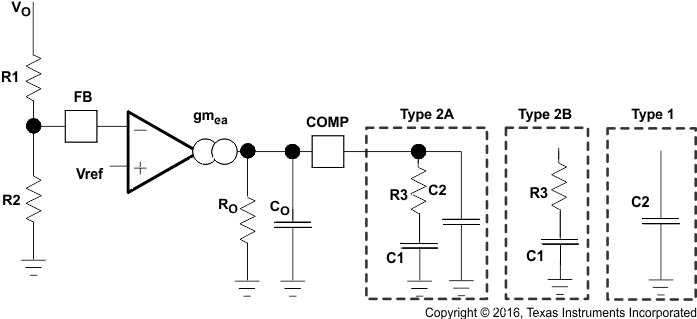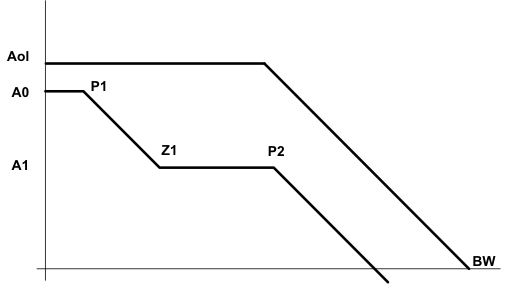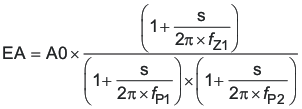JAJSGM6 December 2018 TPS54360B
PRODUCTION DATA.
- 1 特長
- 2 アプリケーション
- 3 概要
- 4 改訂履歴
- 5 概要(続き)
- 6 Pin Configuration and Functions
- 7 Specifications
-
8 Detailed Description
- 8.1 Overview
- 8.2 Functional Block Diagram
- 8.3
Feature Description
- 8.3.1 Fixed Frequency PWM Control
- 8.3.2 Slope Compensation Output Current
- 8.3.3 Pulse Skip Eco-mode
- 8.3.4 Low Dropout Operation and Bootstrap Voltage (BOOT)
- 8.3.5 Error Amplifier
- 8.3.6 Adjusting the Output Voltage
- 8.3.7 Enable and Adjusting Undervoltage Lockout
- 8.3.8 Internal Soft Start
- 8.3.9 Constant Switching Frequency and Timing Resistor (RT/CLK) pin)
- 8.3.10 Accurate Current Limit Operation and Maximum Switching Frequency
- 8.3.11 Synchronization to RT/CLK pin
- 8.3.12 Overvoltage Protection
- 8.3.13 Thermal Shutdown
- 8.3.14 Small Signal Model for Loop Response
- 8.3.15 Simple Small Signal Model for Peak-Current-Mode Control
- 8.3.16 Small Signal Model for Frequency Compensation
- 8.4 Device Functional Modes
-
9 Application and Implementation
- 9.1 Application Information
- 9.2
Typical Application
- 9.2.1 Design Requirements
- 9.2.2
Detailed Design Procedure
- 9.2.2.1 Custom Design with WEBENCH® Tools
- 9.2.2.2 Selecting the Switching Frequency
- 9.2.2.3 Output Inductor Selection (LO)
- 9.2.2.4 Output Capacitor
- 9.2.2.5 Catch Diode
- 9.2.2.6 Input Capacitor
- 9.2.2.7 Bootstrap Capacitor Selection
- 9.2.2.8 Undervoltage Lockout Set Point
- 9.2.2.9 Output Voltage and Feedback Resistors Selection
- 9.2.2.10 Minimum VIN
- 9.2.2.11 Compensation
- 9.2.2.12 Discontinuous Conduction Mode and Eco-mode Boundary
- 9.2.2.13 Power Dissipation Estimate
- 9.2.3 Application Curves
- 9.3 Other Applications
- 10Power Supply Recommendations
- 11Layout
- 12デバイスおよびドキュメントのサポート
- 13メカニカル、パッケージ、および注文情報
8.3.16 Small Signal Model for Frequency Compensation
The TPS54360B uses a transconductance amplifier for the error amplifier and supports three of the commonly-used frequency compensation circuits. Compensation circuits Type 2A, Type 2B, and Type 1 are shown in Figure 30. Type 2 circuits are typically implemented in high bandwidth power-supply designs using low ESR output capacitors. The Type 1 circuit is used with power-supply designs with high-ESR aluminum electrolytic or tantalum capacitors. Equation 15 and Equation 16 relate the frequency response of the amplifier to the small signal model in Figure 30. The open-loop gain and bandwidth are modeled using the RO and CO shown in Figure 30. See Application and Implementation for a design example using a Type 2A network with a low ESR output capacitor.
Equation 15 through Equation 24 are provided as a reference. An alternative is to use WEBENCH software tools to create a design based on the power supply requirements.
 Figure 30. Types of Frequency Compensation
Figure 30. Types of Frequency Compensation  Figure 31. Frequency Response of the Type 2A and Type 2B Frequency Compensation
Figure 31. Frequency Response of the Type 2A and Type 2B Frequency Compensation 








